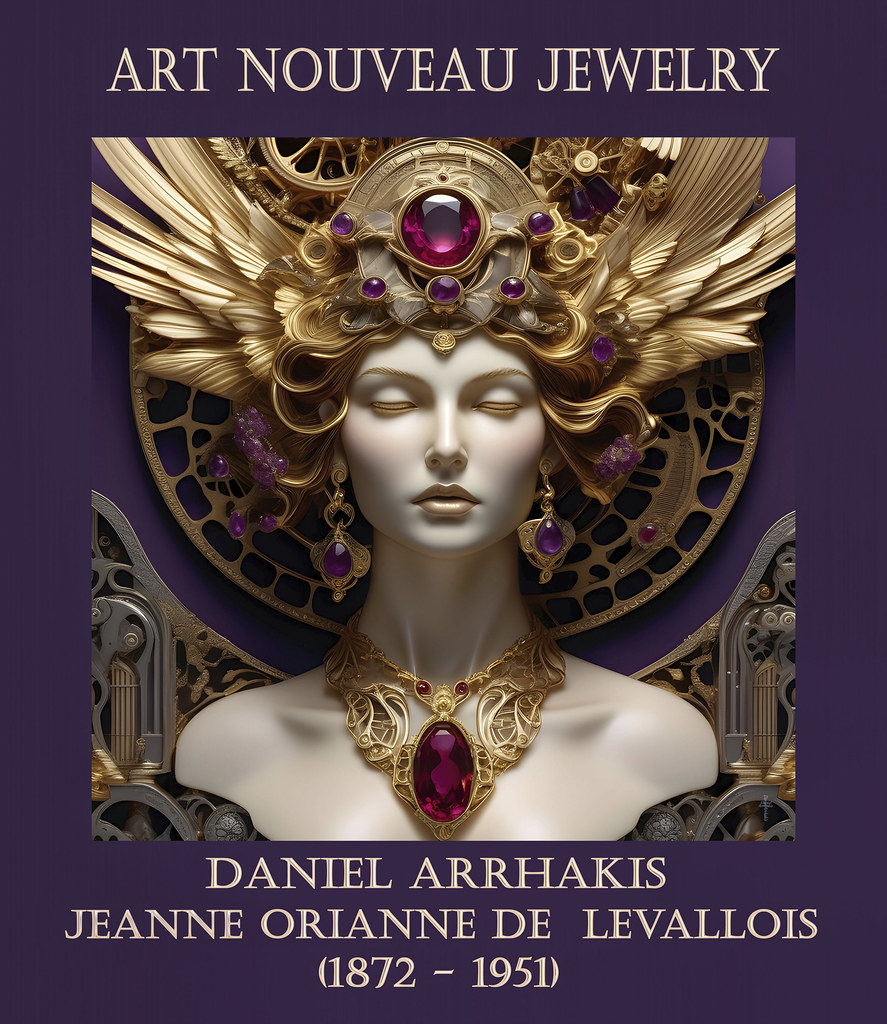#inspired by egon schiele and gustav klimt
Text
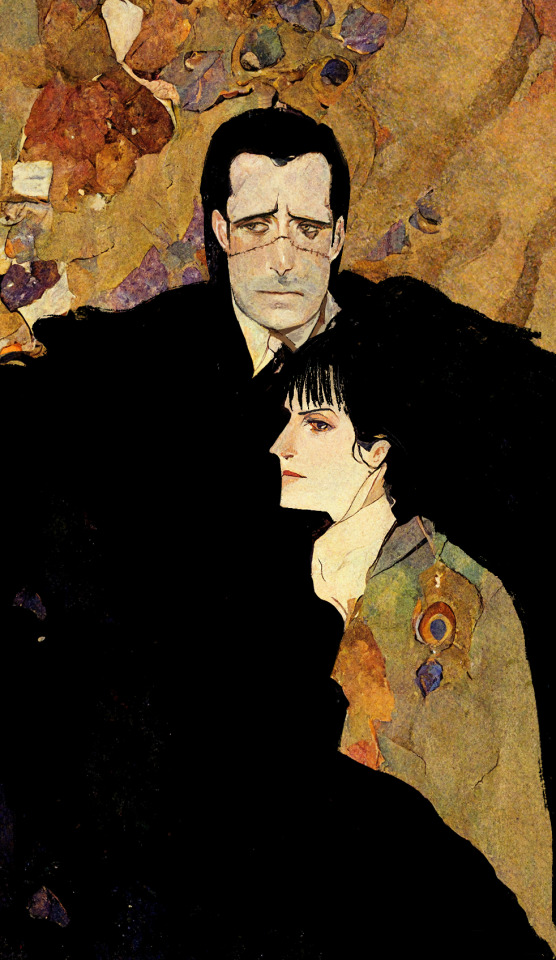
The zeros
#wanihana#baroque works#sir crocodile#nico robin#one piece#apologies egon and gustav#inspired by egon schiele and gustav klimt#whenever cross guild crosses paths with the mugiwaras all hell will break loose#they’ll probably all be allies united against Imu#but i'm sure our girl and the crocoboi will exchange some toxic assed snipes in the process
2K notes
·
View notes
Text
Rewind the Tape —Episode 1
Art of the episode
During our rewatch, we took note of the art shown and mentioned in the pilot, and we wanted to share. Did we miss any? Do you have any thoughts about how these references could be interpreted? How do you think Armand and Louis go about picking the art for their penthouse in Dubai?

The Fall of the Rebel Angels
Peter Bruegel the Elder, 1562
This painting is featured in the Interview with the Vampire book, and it was important enough to be included in the draft pilot script!

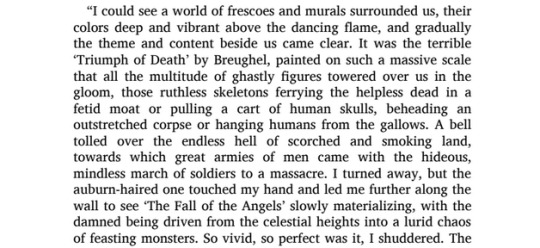
Bruegel the Elder was among the most significant Dutch and Flemish Renaissance artists. He was a painter and print-maker, known for his landscapes and peasant scenes.


Three Studies for Figures at the Base of a Crucifixion
Francis Bacon, 1944
Bacon was an Irish figurative painter, known for his raw, unsettling imagery and a number of triptychs and diptychs among his work. At a time when being gay was a criminal offense, Bacon was open about his sexuality, and was cast out by his family at 16 for this reason. He destroyed many of his early works, but about 590 still survive.
The Tate, where these paintings are displayed, says this about the work: "Francis Bacon titled this work after the figures often featured in Christian paintings witnessing the death of Jesus. But he said the creatures represented the avenging Furies from Greek mythology. The Furies punish those who go against the natural order. In Aeschylus’s tragedy The Eumenides, for example, they pursue a man who has murdered his mother. Bacon first exhibited this painting in April 1945, towards the end of the Second World War. For some, it reflects the horror of the war and the Holocaust in a world lacking guiding principles."

Strawberries and Cream
Raphaelle Peale, 1816 [Identified by @diasdelfuego.]
Peale is considered to have been the first professional American painter of still-life.

Outfits inspired by J.C. Leyendecker
Leyendecker was one of the most prominent and commercially successful freelance artists in the U.S. He studied in France, and was a pioneer of the Art Deco illustration.
Leyendecker's model, Charles Beach, was also his lover of five decades. You can read costume designer Carol Cutshall's thoughts on these outfits on her Instagram.
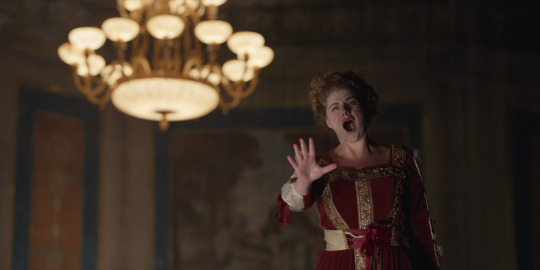
Iolanta
Pyotr Tchaikovsky, 1892
The opera Louis and Lestat go to was composed by Tchaikovsky, another gay artist. The play tells a story "in which love prevails, light shines for all, lies are no longer necessary and no one must fear punishment," as put by Susanne Stähr for the Berliner Philharmoniker.

On the Hunt or Captain Percy Williams On A Favorite Irish Hunter and Calling the Hounds Out of Cover
Samuel Sidney, 1881 [Identified by @vfevermillion.] and Heywood Hardy, 1906 [Identified by @destinationdartboard.]
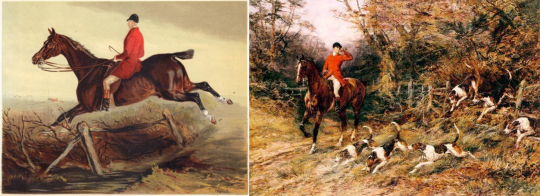
Sidney was an English writer, and his prints usually accompanied his publications about hunting, agriculture, and about settling Australia during the colonial period. Hardy, also British, was a painter, in particular an animal painter.
There's also a taxidermy deer, ram, and piebald deer on the wall.

The Artist's Sister, Melanie
Egon Schiele, 1908 [Identified by @dwreader.]
Schiele was an Austrian expressionist painter and protege of Gustav Klimt. Many of his portraits (self portraits and of others) were described as grotesque and disturbing.
A Stag at Sharkey's
George Wesley Bellows, 1909 [Identified by @vfevermillion.]
Bellows was an American realist painter, known for his bold depictions of urban life in New York City.

Mildred-O Hat
Robert Henri, undated (likely 1890s) [Identified by @nicodelenfent, here.]
Henri was an American painter who studied in Paris, where he learned from the Impressionists and determined to lead an even more dramatic revolt against American academic art.
Starry night
Edvard Munch, 1893 [Identified by @vfevermillion.]
Munch was a Norwegian painter, one of the best known figures of late 19th-century Symbolism and a great influence in German Expressionism in the early 20th century. His work dealt with psychological themes, and he personally struggled with mental illness.
If you spot or put a name to any other references, let us know if you'd like us to add them with credit to the post!
Starting tonight, we will be rewatching and discussing Episode 2, ...After the Phantoms of Your Former Self. We hope to see you there!
And, if you're just getting caught up, learn all about our group rewatch here ►
#louis de pointe du lac#daniel molloy#lestat de lioncourt#vampterview#interview with the vampire#iwtv#amc interview with the vampire#interview with the vampire amc#amc iwtv#iwtv amc#IWTVfanevents#rewind the tape#in throes of increasing wonder#analysis and meta#art of the episode
66 notes
·
View notes
Note
I love your artstyle. I was wondering if you were inspired by a certain artist or it just developed on it's own? P.S. Never stop creating, I love everything you put out!!!
oh my goodness - firstly thank you so much !!!!! <3
hmm- ok, so I've been drawing regulalrly since i was what...12?? and i'm now 24 !! i am inspired by so many artists (and so many other things in general) - I will list a few artists and art movements that I've drawn inspo from in one way or another !! (really hoping this post gets to the dash bc im popping a lot of links to art and credits to photos and what not aghhhh!))
----


image credits - image 1 - image 2
NEO EXPRESSIONISM neo expressionism was an art movment I really leant into when I was at university. Artists such as Luciano Castelli acted as points of intrestet and inspo there !! Other movements that took me by storm at uni included german expressionism and impressionism -- my university city (leicester - UK) held one the largest collections of german expressionist art in the UK !!

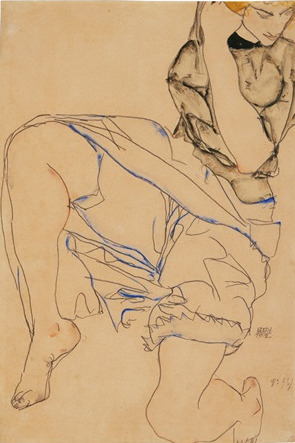
image credits - image 1 - image 2
EGON SCHIELE - specicifcally his line drawings - they have such a lot of life and energy to them! His water colours are also something special too me -! I found out about this art when i was doing my BTEC (pre uni- would have been.... 16/17??) - remember going into the library at my tech collage and finding a book with his art and being in awe - it blew my mind in the best way ! FUN FACT - Schiele was the protege of Gustav Klimt - another artist I get a lot of happy inspo vibes from !! (but will talk abt klimt another time!!)



image credits - image 1 - image 2 and image 3
CLAMP / 90S SHOJO MANGA - in recent years i've fallen back in love with manga (in my pre-teens and early teens i was a big manga fan - naruto was probz my first special interest ) - but in the past few years i've looked into shojo and josei mangas - the manga house CLAMP has had such a pull on me - maybe its how they use colour - im just in awe when i see their work omg <3
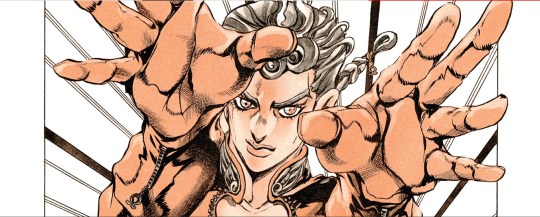
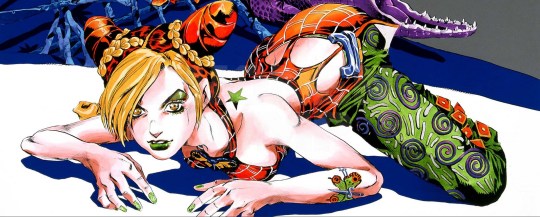
image credits - image 1 - image 2
HIROHIKO ARAKI / JOJO'S BIZARRED ADVENTURE - what im gonna say for now as my final source of inspo - JJBA and Araki's work came into my world the same time as the paintings and drawings of Schiele!! His use of colour and fashion drawing feel makes me very very happy to see !!
---
Thank you again for your kind words !!! You've genuienly made my day !! thank you thank you thank you !! <3
23 notes
·
View notes
Text
GUSTAV KLIMT: Gold In Motion Returns to Hall des Lumières for ONE DAY ONLY
💫NYC Loves NYC x Hall des Lumières Giveaway!
Are you ready for the most captivating immersive art experience? @halldeslumieres to bring you an experience that is promised to ignite your senses and leave you speechless!
@halldeslumieres is opening back up their art centre for a special one-day event showcasing:
GUSTAV KLIMT, GOLD IN MOTION. Glowing, animated images of historic artworks are seamlessly united with music and landmark architecture. This is something you won't want to miss.
EVENT DETAILS:
- 📆 : April 20th ONLY
- 🕛 : 11 AM - 6 PM
- 📍: Hall des Lumières (49 Chambers Street, New York, NY)
Gustav Klimt (14 July 1862 – 6 February 1918) was an Austrian symbolist painter and one of the most prominent members of the Vienna Secession movement.
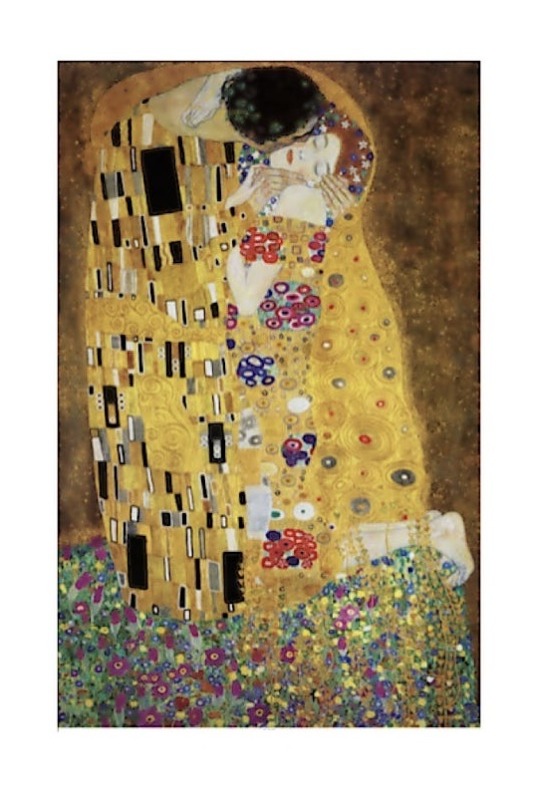
The Kiss - Gustav Klimt
‘The Kiss’ by Gustav Klimt was painted between 1907 and 1908 during the height of what scholars call his ‘Golden Period’ in which a number of his artworks were inspired by Byzantine mosaics. The painting depicts a couple embracing, their bodies entwined in elaborately decorated robes against a gold leaf background.
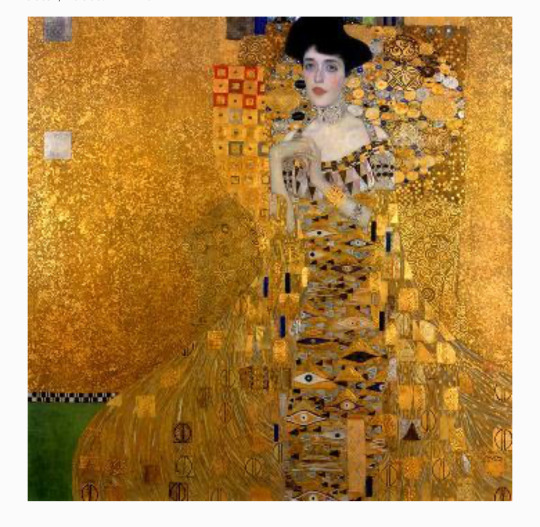
Portrait of Adele Bloch-Bauer I, 1907 - Gustav Klimt
‘Portrait of Adele Bloch-Bauer I’ is an oil painting with gold and silver leaf on canvas produced by Austrian artist Gustav Klimt. The portrait was commissioned by the sitter’s husband, Ferdinand Bloch-Bauer, a Jewish banker and sugar producer. The portrait is the final and most fully representative work of what scholars have coined as his ‘golden period’ in which a number of his artworks were inspired by Byzantine imagery and mosaics.

Gustav Klimt
As the leading Viennese painter of the early 20th century, Gustav Klimt (1862 -1918) influenced, amongst others, Egon Schiele. Klimt is most known for his sensuous, highly-decorative portraits but he also created richly verdant landscapes. The luxuriant works adorned with gold leaf produced in the 'Golden Phase' of his career include his famous 1908 painting 'The Kiss'.
**All images are copyrighted property of their respective owners. All rights reserved.
@halldeslumieres @nyclovesnyc #NYC #painter #Viennese #GustavKlimt #paints #TheKiss #GoldenPeriod #PortraitofAdeleBloch-BauerI #artworks #Byzantinemosaics #Austrianartist #Austria 🇦🇹 #ViennaSecessionmovement.
Posted 19th April 2024
4 notes
·
View notes
Note
i need you to know that i was just talking to a friend about how there's apparently no one who has made a version of "The Kiss" by Gustav Klimt with Maka and Crona (or at least none that we can find) and i had to tell you that i was trying to think of what it would look like and i imagined it existing in your style
oh this is actually wonderful, you read my mind. klimt is one of my favorite artists ever, he's a great inspiration for me and he was also the mentor of my favorite artist ever: egon schiele, so i'm really fond of his work. i've been planning on doing a variant of that painting with croma forever now. and i might even get to now that i'm on break :)
#i'm so glad your mind went to me first. as it should i haven't been shoving gold and decorum into everything for nothing#murk talk
8 notes
·
View notes
Text

As both maker and muse, avant-garde fashion designer Emilie Flöge’s influence weaves through the history of Vienna and contributes to its allure as a cultural destination today. Born in 1874, Flöge advanced from seamstress to boutique owner at a time of rapid societal change. As she inspired—and was featured within—masterworks by the acclaimed Austrian painter Gustav Klimt, she also pioneered liberation for women through corset-free clothing with flowing silhouettes and ornate decorative motifs.
The fact that Flöge is better known for her collaborative relationship with Klimt neglects her exquisite craft and independent entrepreneurial success in Vienna during the fin-de-siècle. Flöge’s style was part of an international discourse that included French couturiers Paul Poiret, who removed bodices from his creations in 1906, and Coco Chanel, who introduced comfortable but elegant two-piece women’s suits. Though Poiret’s developments were primarily aesthetic, Flöge’s and Chanel’s were ideological and fanned attention to a sense of rebellion.

Flöge, with sisters Pauline and Helene, opened the salon Schwestern Flöge (which translates to “Flöge Sisters”) in 1906, four years before the first Chanel boutique opened in Paris. Being owned and operated by three women was an uncommon undertaking at the time, but its lively location on Mariahilfer Straße welcomed bourgeois women who became regular patrons. It was here that Flöge contributed to the expanding “rational dress movement” of reformed shapes, also known as the “Reformkleid,” where generous cuts with wide sleeves draped playfully over the wearer. Flöge embellished these dresses with patterns that drew inspiration from Eastern European embroidery, which imparted the smoke-like garments with a glamorous Viennese-bohemian spirit. This was radical, unrestricted fashion.
Schwestern Flöge was a predecessor to what we today refer to as a concept shop. Designed by architect Josef Hoffmann (who also imagined Klimt’s studio), it was uniquely furnished with geometric wooden chairs, checkered tables, carpets, and adjustable mirrors. It was also peppered with objets d’art and luxury items, crafted from tortoiseshell and lapis lazuli, that couldn’t be purchased. With the store’s detailed logo, which paired art nouveau text with a checkered border, a fully-formed brand captured the attention of Vienna’s high society.
Flöge’s role as creative head required everything from broad, trend-setting decisions to hands-on production work with clients. The studio expanded to 80 seamstresses at its height, and operated for 30 years. Both feats were a testament to Flöge’s acumen, as was her success beyond Vienna with a curious international market. At home, Schwestern Flöge became the leading fashion destination of its Viennese society—and this innovative venture paved the way for shopping in contemporary Vienna.
Today, concept shops and boutiques abound, from the hybrid fashion, art, and design store SONG, to Park, which highlights established and emerging Austrian designers. While Mariahilfer Straße is still a celebrated destination (especially with locals), Margaretenstraße plays host to the exhilarating boutiques Samstag, Unikatessen, Wolfensson, and more. Walking through the historic city center, as well as the Goldenes Quartier, provides ample access to items beyond clothing and accessories, too.
As fashion is ingrained in Vienna, so too is art. This is due in part to Klimt’s legacy, and his work appears in museums throughout Vienna—especially at the Schloss Belvedere, an acclaimed institution with a detailed Austrian art collection that also includes pieces by Egon Schiele and Koloman Moser.
In his time, Klimt purchased fashionable items from Flöge, but that isn’t how they knew one another. Their lives were intertwined long beforehand, with their first known correspondence taking place in 1895. Though it has been presumed they were in love, both were discreet about anything beyond friendship, which has been observed through nearly 400 written documents that they exchanged.
“Her intricate fashion was very much sought after and, much like Klimt’s paintings, a must-have among the fashionable and artistically minded.”
Sandra Tetter, director Gustav-Klimt-Centre on Lake Attersee
It’s her role in his art that has led to further assumption—from the “Portrait of Emilie Flöge,” where Klimt depicts her with shimmering splendor, to “The Kiss,” which is arguably his most famous work (and on display at Schloss Belvedere). In the former, Klimt displays the revolutionary golden style that will define him. With the latter, a couple—arguably Flöge and Klimt—passionately embrace, adorned with mesmeric attire that resembles her fashion.

In addition to painting Flöge, Klimt worked in collaboration with her. Together, they explored color and form, and she even produced designs that he made. In these, they were photographed together around Lake Attersee, a pristine destination (then and today) with exquisite panoramas. They regularly summered together in various villas along the lake, which today can be toured through the Klimt Artist Trail, organized by Sandra Tetter, director Gustav Klimt Center on Lake Attersee art center, which transports visitors to the artist’s time at the site where he created over 40 landscape paintings.
When Klimt died in 1918, part of his estate went to Flöge, and his purported last words were, “Get Emilie.” Klimt imbued Vienna with a golden luster that mirrors his own artistic achievements. For this, he has become a ubiquitous figure in the arts world, whereas Flöge has fallen into relative obscurity. Her legacy does live on, however, from an honorary grave in the Wien-Simmering cemetery to the global revival of attribution occurring today. Even Maria Grazia Chiuri and Pierpaolo Piccioli referenced Flöge’s “Reformkleid,” through liberated shapes and opulent patterns, with their Fall/Winter 2015 collection for Valentino.
A dazzling contemporary cultural attraction for its art history, grand café culture, extravagant ball season, and sheer natural beauty, Austria’s charm parallels that of Flöge’s—and to think of visiting Vienna or Lake Attersee means looking to her future-forward values and what they mean today.
#Emilie floge#Emilie Flöge#gustav klimt#art#art history#women in history#women in art#vogue#fashion#fashion designers
8 notes
·
View notes
Text

Vía wwwartafrica
Nigeria
Emmanuel Ojebola, a gifted artist from southwest Nigeria, was born in Eruwa, Oyo State. His artistic journey blossomed at Baptist Model High School Sango, Eruwa, where a creative art teacher nurtured his passion during his junior secondary school days. Seeking knowledge, he further honed his skills at The Ibarapa Polytechnic Eruwa, specializing in mixed media, particularly coffee, acrylic, and oil, with a focus on capturing human emotions and life's complexities.
Beyond traditional mediums, Emmanuel explores photography, skillfully unveiling the genuine essence and emotions of his subjects. His art seamlessly blends realism with abstract elements, reflecting his life experiences. Inspired by the resilience of women, drawn from his personal journey with his mother through challenging times, he is now a dedicated full-time studio artist. Emmanuel passionately believes in art's power to instigate positive change and sees it as a universal language that transcends borders. Every stroke and photograph, in his eyes, serves as a testament to the potential of art to shape a brighter future for humanity.
Drawing inspiration from figures like Gustav Klimt and Egon Schiele, as well as contemporary colleagues, Emmanuel's portfolio includes notable exhibitions such as "Emergence" at Alexis Gallery Lagos in 2021 and "OUR MANY COLOURS" at Art Pantheon Gallery in 2022. His works have gained recognition beyond Nigeria, reaching audiences on platforms like Artsper.
1 note
·
View note
Video
Art Nouveau Jewelry - Jeanne Orianne De Levallois (1872 - 1951) In a Tribute To Élisabeth Sonrel (1874-1953) And Other Women Art Nouveau Artists And Creators by Daniel Arrhakis (2023)
Art Nouveau ('New Art') is an international style of art, architecture, and applied art, especially the decorative arts. It was often inspired by natural forms such as the sinuous curves of plants and flowers. Art Nouveau artists drew inspiration from natural elements, such as flowers or insects. Curves, asymmetrical forms, and intense colors were other common motifs of the movement.
The Art Nouveau aesthetic also appeared in various media, including decorative art, paintings, architecture, Jewelry, and even advertisements.
One major objective of Art Nouveau was to break down the traditional distinction between fine arts (especially painting and sculpture) and applied arts. It was most widely used in interior design, graphic arts, furniture, glass art, textiles, ceramics, jewelry and metal work.
It was popular between 1890 and 1910 during the Belle Époque period, and was a reaction against the academicism, eclecticism and historicism of 19th century architecture and decorative art.
Another important influence on the new style was Japonism. This was a wave of enthusiasm for Japanese woodblock printing, particularly the works of Hiroshige, Hokusai, and Utagawa Kunisada, which were imported into Europe beginning in the 1870s.
Some of the artists who defined de movement are : Gustav Klimt (1862 - 1918), Alphonse Mucha (1860 - 1939), Henri de Toulouse-Lautrec (1864-1901), Egon Schiele (1890-1918), Antoni Gaudí (1852-1926), Victor Horta ( 1861-1947), Louis Comfort Tiffany (1848-1933), Émile Gallé (1846-1904), René Lalique ( 1860 - 1945) Louis Majorelle (1859-1926), Etc...
But during this period there were also great female artists who often ended up forgotten in the Art Nouveau Movement, such as Elisabeth Sonrel, Julie de Graag, Sisters Margaret and Frances Macdonald, Gerda Wegener, Charlotte Newman, Elinor Evans Klapp, and many others.
Elisabeth Sonrel (1874 – 1953 ) was a French painter and illustrator in the Art Nouveau style. Her works included allegorical subjects, mysticism, symbolism, portraits, and landscapes.
Charlotte Newman, also known as Mrs. Philip Newman (English) (1840–1927), was the first English woman to be recognized as a jeweler in the second half of the nineteenth century.
Her success in the traditionally male-dominated profession inspired many more women in the Arts and Crafts movement to become jewelers.
Elinor Evans Klapp (American) (1845-1915) the wife of a successful dry goods merchant, took up jewelry design in her early forties.
She soon made up for lost time by launching herself as one of the largest exhibitors in Chicago’s Arts and Crafts shows, and by sending forty pieces to the Paris Exhibition of 1900.
In the realm of jewellery, the Art Nouveau period (1890 to 1910), Which coexisted with the Victorian era and the Edwardian era, saw designers innovate crafting techniques and experiment with new materials.
Art Nouveau jewellery was ornate, reflecting the unrestrained beauty of the natural world, and did not rely on the preciousness of its components.
During this brief period, five jewelry designers (All Men) stood out amongst the rest for their masterful work : René Lalique (1860-1945), Henri Vever (1854 -1942), Georges Fouquet (1862-1957), Louis Comfort Tiffany (American) (1848 -1933), Lucien Gaillard (1861-1942), Joë Descomps (1872–1948), Karl Rothmüller (German) (1860–1930) etc.
These series are a tribute to the women creators, artists who were so often forgotten during the Art Nouveau movement in an art world at the time dominated by men, like Elinor Evans Klapp, Charlotte Newman, Elisabeth Sonrel and others ...
The Mystery Of Jeanne Orianne De Levallois (1872 - 1951) A French Woman Jewelry Creator.
In this sense, I present to you for the first time Jeanne Orianne De Levallois (1872 - 1951) (*) Born in Rocamadour (France) , a half-sister of Élisabeth Sonrel, whose existence was always kept secret by her paternal family.
It is not known to what extent her father Nicolas Stéphane Sonrel, a painter from Tours, partially influenced her drawing and painting skills, but unlike Élisabeth, her sister never showed her works, especially her series of jewelry that she designed in secret, signing with the name Jeanne Orianne De Levallois so as not to arouse any suspicion.
According to legend, Orianne, towards the end of her life, had moments of absence and lack of memory, it is believed that on one of these occasions she got lost in the Grotte des Merveilles and despite all efforts, it was never found until today.
Her notebook of drawings and sketches was only found recently, during a routine exploration of the Grotte des Merveilles.
In a recess of the cave was what appeared to be a thick notebook wrapped in furs and silks. In it were some of the most beautiful jewels ever created by any French jeweler.
It is these drawings that I present to you today in these series in a recreation created with the help of Artificial Intelligence and digital art. Hope you like it ! : )
(*) Mystery personage, stories and artistic collections created by Daniel Arrhakis.
(via Art Nouveau Jewelry - Jeane Orianne De Levallois (1872 - 1… | Flickr)
1 note
·
View note
Text
For YYH, Togashi was inspired by HR Giger's work, who in turn was inspired by Dalí and by Fuchs, and Dalí was in turn inspired by writings by Freud and Lautreamont (hack and poet respectively), Picasso and Miró, Yves Tanguy, an extended relationship w Museo del Prado, "incontestably the best museum of old paintings in the world", classicals such as Velazquez (HE GOT HIS MOUSTACHE FROM THIS GUY???), Vermeer, Bronzino, Raphael, and Franscisco de Zurbaran; Fuchs meanwhile was inspired by Gustav Klimt, Egon Schiele, Edvard Munch (aaaay!), Picasso (again he appears!), Max Penchstein, Henry Moore, and Heinrich Campendonk, and sought to revive Martin Schongauer, Albrecht Dürer, Matthias Grünewald, and Albrecht Altdorfer, and inspired by writings by Meister Eckhart and Jung and works by Jacques Callot, Jan van Eyck, Jean Fouquet. (info borrowed primarily from wikipedia, briefly looked over)
0 notes
Text
Glittering Dreams: The Spellbinding World of Gustav Klimt's Paintings
When contemplating the intersection of symbolism, sensuality, and unapologetic beauty in art, one name often surfaces above all others: Gustav Klimt. An Austrian symbolist painter and one of the most prominent members of the Vienna Secession movement, Klimt is known for his decorative, erotic, and deeply symbolic works that continue to captivate and inspire. This post explores the mesmerizing allure and profound symbolism of Gustav Klimt's paintings.
The Golden Phase
Klimt's most iconic works belong to his so-called "Golden Phase," characterized by the use of gold leaf and intricate patterns that lend his paintings a mystical, Byzantine quality. This stylistic shift is thought to have been influenced by Klimt's visit to Ravenna, Italy, where he encountered stunning Byzantine mosaics that left a lasting impression on his art.
The Iconic 'Kiss'
"The Kiss" (1907-1908), arguably Klimt's most famous painting, epitomizes his Golden Phase. The artwork depicts two lovers in an intimate embrace, enveloped in a cascade of decorative robes that blend with the shimmering, golden background. "The Kiss" transcends the physical realm, suggesting a spiritual union that captivates viewers with its intense sensuality and spiritual resonance.
Other Notable Works
"Portrait of Adele Bloch-Bauer I" (1907), also known as "The Woman in Gold," is another quintessential Klimt painting. It portrays Adele Bloch-Bauer, a Vienna society lady, amid a stunning array of symbols and shapes rendered in gold. This portrait, renowned for its intricate detail and sumptuous beauty, fetched a record price of $135 million in 2006, the highest price ever paid for a painting at the time.
Klimt's "The Tree of Life" (1905) provides a compelling exploration of existential themes. The painting features a sprawling, spiraling tree against a mosaic-like background of intricate patterns. The tree, a universal symbol of life and connectivity, serves as a powerful symbol of the cyclical nature of existence.
Klimt's Legacy
Klimt's impact on the art world extends far beyond his life. His decorative style, symbolic depth, and embrace of eroticism have influenced a diverse range of artists, from Egon Schiele to modern digital artists. His works have become cultural icons, appearing on everything from posters to clothing.
Moreover, Klimt's paintings have sparked numerous conversations about the role of women in art, the intersection of art and sexuality, and the value of decorative art—conversations that remain relevant today.
Concluding Thoughts: Beyond the Golden Surface
Gustav Klimt's paintings are more than just dazzling spectacles; they are intricate tapestries that weave together themes of love, life, death, and desire. They invite us to look beyond the golden surface, to explore the complex interplay of symbols, and to engage with the profound existential questions posed by his work.
Klimt's art continues to enthral, challenge, and inspire, making him a truly indispensable figure in the history of art. Through his daring exploration of sensuality and symbolism, Klimt invites us to delve into the glittering depths of the human experience, reminding us of the enduring power and beauty of artistic expression.
1 note
·
View note
Text
About Egon Schiele: His Life, Art, and Controversial Works
Start by introducing Egon Schiele as an Austrian painter known for his distinctive style and controversial subject matter. Mention that his works have inspired many artists over the years, and that his paintings and posters continue to be sought after by collectors and enthusiasts around the world.
II. Who was Egon Schiele? Provide a brief biography of Egon Schiele, including his birth and death dates, where he was born, and any notable events or experiences that influenced his art. Mention that he was a student of Gustav Klimt, another famous Austrian painter, and that he began his career in the early 1900s.
III. Egon Schiele's Style of Art Describe Egon Schiele's style of art, including his use of bold lines, exaggerated proportions, and distorted figures. Mention that he often depicted unconventional subjects, such as prostitutes and nude models, which led to controversy during his lifetime. Explain how his art was influenced by other artistic movements of the time, such as Expressionism and Symbolism.
IV. Egon Schiele's Paintings Discuss the different types of paintings that Egon Schiele created, including landscapes and cityscapes, portraits and figurative art, and erotic art. Provide examples of each, and describe how his unique style is present in each type of painting.
A. Landscapes and Cityscapes
Describe Egon Schiele's landscapes and cityscapes, including his use of bold lines and bright colors. Explain how he used these techniques to create a sense of depth and perspective in his works. Provide examples of his paintings, such as "Houses with Laundry (1914)" and "Krumau on the Moldau II (1916)."
B. Portraits and Figurative Art Explain how Egon Schiele's portraits and figurative art showcase his unique style, such as the use of elongated limbs and distorted facial features. Provide examples of his paintings, such as "Self-Portrait with Raised Bare Shoulder (1912)" and "Portrait of Wally Neuzil (1912)."
C. Erotic Art Discuss Egon Schiele's controversial erotic art, which often depicted nude models and prostitutes. Explain how his use of bold lines and exaggerated proportions emphasized the sexualized nature of his subjects. Provide examples of his paintings, such as "Nude Self-Portrait with Spread Legs (1911)" and "Standing Nude with Stockings (1914)."
V. Egon Schiele's Posters Describe Egon Schiele's posters and how they represent his unique style and subject matter. Explain how his use of bold lines and bright colors made his posters stand out, and how they often depicted provocative or unconventional subjects. Provide examples of his posters, such as "Ver Sacrum (1898-1903)" and "Am Secession-Abend (1918)."
VI. How to Purchase Egon Schiele Paintings and Posters Provide guidance on how to purchase Egon Schiele paintings and posters, including tips for buyers.
A. Online Stores Explain how online stores, such as Merch Fuse and auction houses, are a convenient way to purchase Egon Schiele paintings and posters. Provide examples of reputable online stores that specialize in art sales, such as Sotheby's and Christie's.
B. Auctions and Galleries Discuss how attending auctions and galleries can be a great way to view and purchase Egon Schiele's works in person. Explain how auctions work, and provide examples of reputable galleries that feature Egon Schiele's paintings and posters.
C. Tips for Buying Egon Schiele Paintings and Posters Provide tips for buyers who are interested in purchasing Egon Schiele paintings and posters, such as researching the artist and the specific work, inspecting the condition of the painting or poster, and setting a budget.
VII. Conclusion Summarize the key points of the blog post, emphasizing Egon Schiele's unique style and controversial subject matter. Encourage readers to explore Egon Schiele's paintings and posters, and provide resources for further research and viewing.
Check out our website for buying exhibition posters and Paintings. Merch Fuse.
Top of Form
0 notes
Text

More experimentations. This time with cross guild dilfs.
#sir crocodile#dracule mihawk#one piece#apologies egon and gustav#inspired by egon schiele and gustav klimt#cross guild
986 notes
·
View notes
Text
Obsession: Nudes by Klimt, Schiele, and Picasso from the Scofield Thayer Collection
This exhibition presents a selection of paintings by artists of the school of Paris and a brilliant group of erotic and evocative watercolors, drawings, and prints by Gustav Klimt, Egon Schiele, and Pablo Picasso.
This exhibit gave me a much needed dose of inspiration. Work by three of my all time favorites in one show...
Obsession: Nudes by Klimt, Schiele, and Picasso
1 note
·
View note
Text
Five facts about me!!
Thank you @pinkydude for the tag!! ♡⸜(˃ ᵕ ˂ )⸝
Okk let's go!! Bunny lore time !! wowowow wooow!!
1. I have an art degree!! I finished my degree through the covid lockdowns in the uk [as the pandemic started halfway through my second year of university]. It was heartbreaking work and hard work... but I got through it and graduated with a 2:1 in fine art!! my practice at uni revolving around making big scale drawings and paintings that dwelve into human sexuality and the abstraction of figures- maybe one day I will share my uni work here :)
2. Artists that inspire me include Egon Schiele and Gustav Klimt. /art movements that inspire me are neo expressionism and auto destructive art. Outside of arty artists- i get a lot of my inspo from manga (eg- stuff by the manga house CLAMP) ... also fashion drawings as well! The artist Yoji Shinkawa inspires me as well
3. Within the past year and a half I've gotten into dance music. Some of my favourite artists are fred again... sub focus and pendulum, also Bicep!! . I got into dance music more over this time because of having the dance radio station (radio 1 dance) on at my place of work!!
4. I'm gray asexual. My own sexuality is very similar to Viridian's. My asexuality is something I only came to accept and explore in the past year or so.
5. I went to my first ever gig last year! I went to go and see a band called fields of the nephlim! 2022 was the year I did new and scary things.... it was one of the best new and scary things I did- dancing in a pack crowd to their track "moonchild" and then almost getting dragged into a mosh pit was definitely an experience!!
tagging: @imaginarycyberpunk2023 @genocidalfetus @holofishes @heywoodvirgin @halsin @chessalein @maimaiapologist @miyokovektor @noonfaerie @morganlefaye79 @fereldanwench and anyone else who'd want to take part!!!
7 notes
·
View notes
Note
6 and 11 for that end of the year ask game?
6. longest a drawing has taken to finish
about 4 hours give or take, which was this one posted here:

it was the first time I painted a leafy forest so it took some time to figure out how to make the trees look good. for the non-digital-artists here, I'm absolutely not painting those leaves by hand - they're made with the awesome (free!) plant brushes by @tamberella!
11. artist(s) that influenced/inspired your art style
LOVE this question, there are SO MANY so this will get long and I'll probably forget a whole bunch. I'm kinda splitting it up and making it a list for readability
in general:
Vincent van Gogh and impressionism in general
17th-19th century etchings for their incredible linework and hatching. yes the genre as a whole, I wouldn't know specific artists
Alphonse Mucha - if you only know his art nouveau stuff please check out The Slav Epic, breathtaking
all of John Singer Sargent's work tbh, especially his portraiture
Hukosai, Yoshida and Hiroshige for their landscapes - ukiyo-e is incredible in how it conveys so much with such restraint
that typical Instagram concept artist style (idk what else to call it), such as Pascal Campion/@pascalcampion, Henry Wong/henrywongdraws, Dom Lay/layeredpainter, Emiliano Castellano - the list goes on.
colors/rendering:
all the concept artists mentioned above + David Hockney's iPad drawings
@holly-warbs thee holly warbs, such great palettes and style
@wifihunters such interesting/good colors and rendering in every piece, going back years and years
@anonbeadraws work has the kind of palettes I wanna live in
Sergey Kolesov's incredible work for Dishonored
finally I browse the artists on tumblr tag and some fanart tags regularly cos artists on tumblr in general come up with really interesting palettes
last year I've focussed on making my lines looser and more expressive, here are some inspirations for that:
Gustav Klimt's sketches (beware, you'll find a LOT of n//sfw),
Egon Schiele's drawings/art
and the archives of @anobviousaside and @hellosaidthemoons-archives (both occassionally n//sfw)
plus a whole bunch of traditional artists I used to follow on Instagram but don't remember the names of :| but they all made these beautifully flowy life drawings
this is still a very limited list because I'm all over the place - I regularly scroll through the 'colors' and 'art style' tags on my @mjulmjul-reblog sideblog, and have a few hundred pieces saved locally too
#don't worry i intend to actually post some art today too 💀#tagging people so you can easily clickthrough to their tumblrs#yes im putting klimt in the same list as tumblr destiel artists. who cares man art is for everyone#i've never had formal art education which probably partially explains the chaos of the inspiration list#color digital pieces usually take me 1-3 hours which i thiiink is pretty fast and partly the reason i post so goddamn much lol#mjulmjul answertime#not art
26 notes
·
View notes
Text

Sofia Bonati (Argentinian, 1982)
Ottavia, n.d.
For the past couple of years, Sofia Bonati has been drawing intricate portraits of women against a backdrop of mazes and floral patterns. A self-taught artist from Argentina, now based in the UK, Bonati uses pencils, watercolours, inks, gouache and markers to portray “the intricacy of the female mind and women’s role in society”. She is influenced by Gustav Klimt and Egon Schiele for their treatment of the human form, and by William Morris for his patterns. The women in the paintings are generally a composition of different pictures that inspire her. “There are definitely elements in my work that naturally relate to feminism. The portraits I draw reflect the complexity and power of women.”
22 notes
·
View notes
